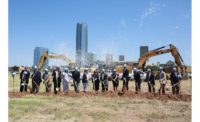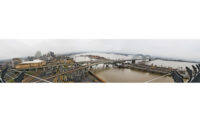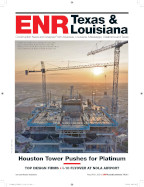
Clear skies replaced storm clouds in Texas and Oklahoma on June 1, but floodwaters from May's record rains remained, slowing crews' efforts to determine damage totals as residents and businesses tried to return to flooded buildings.
Texas, where 23 deaths had been confirmed by June 1, was declared a federal disaster area before the rain stopped. The storms that started on May 4 dumped a total of 35 trillion gallons across the state—enough to cover its surface with 8 in. of water, according to the National Weather Service.
Interstate 45 and U.S. 59, near the San Jacinto River in Houston, were still blocked on June 2, the result of high waters caused by the record rainfall and upstream dam releases, says Dinah Massie, spokeswoman for Houston Tristar, the area transportation and emergency management agency.
"The amazing thing is, we didn't have more flooding," says Wayne Klotz, president of Klotz Associates Inc., a Houston civil engineering firm. "The newer areas don't flood," thanks to better design techniques and newer construction methods.
Some of Houston's freeways, built across bayous a long time ago, were built too low, Klotz says. "The cost to raise a freeway is astronomical," he says.
So, the risk of closing a highway for flooding once every 10 years is a risk the Texas Dept. of Transportation "is willing to take," he says. "It takes money to fix those sorts of things." But, he adds, the state Legislature just passed a budget that allocates $2.5 billion more for highways.
Houston is looking at $25 million in damages to public utilities and infrastructure. Much of that figure is at the Southwest Wastewater Treatment Plant, which sustained electrical and mechanical system damage after Brays Bayou flooded the facility. The flood caused a 100,000-gallon spill of untreated wastewater into the surrounding floodwater.
There is another $4.5 million in damage to public buildings and equipment, mostly in basements and parking garages, says Francisco Sanchez, spokesman for the Harris County Office of Homeland Security and Emergency Management.
At least 1,500 homes were damaged, a number that, after crews finish assessments, will total in "the thousands," Sanchez says. Debris removal in Houston will cost another $15 million, he says.
In Dallas on June 2, some roads were still under water from the flooded Trinity River, as water levels remained high at three dams upstream. Also on June 2, Lewisville released 16,122 cu ft per second, Grapevine 2,715 cfs and Lake Ray Roberts 7,458 cfs.



